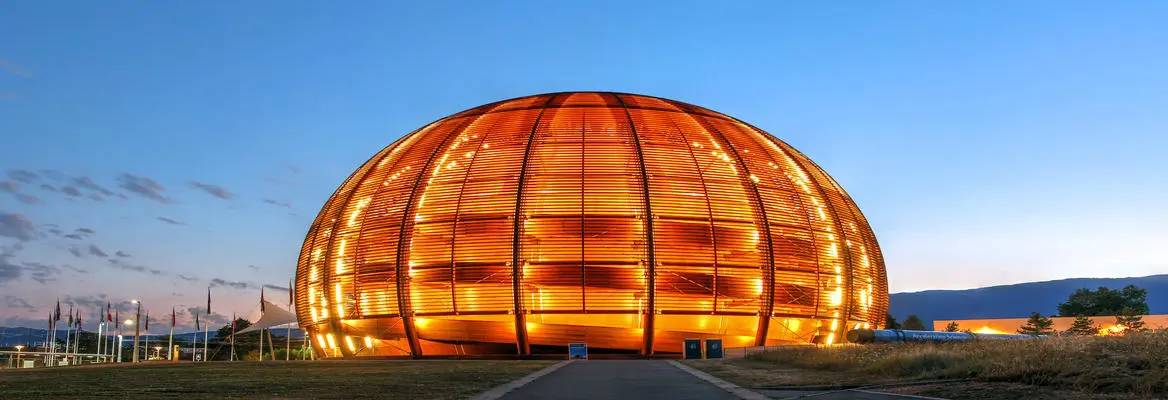We are used to the idea that beauty and elegance are valued in scientific theories. But what about beautiful experimental set-ups and results? We should not overlook the significance of the aesthetics of experiments, writes Milena Ivanova.
While scientific products, such as theories, models and experiments, are created in our attempt to understand and manipulate the world around us, they are also often praised for being aesthetically pleasing and beautiful.
From scientific theories, such as Einstein’s relativity and Darwin’s evolution, to the experiments that led to the discovery of electrons, DNA replication or decomposition of light, scientific products are praised not only for uncovering truths about the world but also for doing so in an elegant, apt and beautiful way.
In addition to praising the products of scientific engagement as aesthetically valuable, we also assign artistic and creative credit to scientists, just as we do with artists, recognising their use of imagination and ability to create something new and valuable. Experimental practice has an interesting artistic dimension that is too often overlooked. However, as we will see below, experiments can be appreciated for their aesthetic features, can be seen as artworks, as a form of public spectacle, and can evoke in us aesthetic experiences.
The aesthetics of historic experiments
That experiments have an artistic dimension becomes clear when we think about the origins of experimental practice and the fact natural philosophers in the 17th century would often perform experiments in front of audiences, making the experiment a public spectacle. The experiment, as a privileged path to unveiling and intervening in nature, was recognised already in the work of Francis Bacon, who in his Novum Organum, published in 1620, emphasizes the significance of the experiment in forming hypotheses about the world and testing their correctness.
 SUGGESTED READING
Science is based in metaphor
By Andrew Reynolds
The experiment became central to the empirical method of scientific investigation and through repeated demonstrations and interventions using newly invented instruments, natural philosophers began to explore nature in domains no one had previously reached. This was the time in which natural philosophers studied the vacuum using the newly invented air pump, Newton discovered the decomposition of sunlight using prisms, and advancement in optics and lenses enabled the construction of new instruments that allowed us to reach further than ever before. The experiments became the focal point of the appreciation of the new inventions and what the experimenters uncovered using them.
SUGGESTED READING
Science is based in metaphor
By Andrew Reynolds
The experiment became central to the empirical method of scientific investigation and through repeated demonstrations and interventions using newly invented instruments, natural philosophers began to explore nature in domains no one had previously reached. This was the time in which natural philosophers studied the vacuum using the newly invented air pump, Newton discovered the decomposition of sunlight using prisms, and advancement in optics and lenses enabled the construction of new instruments that allowed us to reach further than ever before. The experiments became the focal point of the appreciation of the new inventions and what the experimenters uncovered using them.

An Experiment on a Bird in an Air Pump by Joseph Wright of Derby, 1768
The famous painting ‘An experiment on a bird with the air pump’ by Joseph Wright of Derby depicts excellently the performative nature of experiments and the variety of ways in which an experiment can evoke an aesthetic response in the audience. The experimenter in the middle of the painting resembles a performer who aims not only to demonstrate to the audience the phenomenon under the specific experimental conditions, they also want to provoke fascination, awe, and amusement in the audience. The painting depicts the diverse responses of the audience, fascination, awe, delight, even mystery and fear, all experienced while the air pump extracts the air from the cylinder, creating uninhabitable conditions for the unlucky living creature. These experiences, that go beyond teaching the audience about the demonstrated phenomenon, were clearly stated by Joseph Priestley, who in his notes reflecting on experiments on electric currents writes about the experiment as ‘the most delightful spectacle’, generating in the audience experiences of awe, delight, pleasure.
What is noteworthy of these experiments is that they are performative and the audience perceives their results with immediateness. In the experiments with the air pump, for instance, the audience saw the effect of extracting the air from the cylinder using the air pump. The experiment, as a public spectacle, offered immediately perceivable features that were appreciated in the audience, just like a theatrical performance would. It is noteworthy of experiments of this period that their aesthetic value is easily accessible for appreciation, the experiment has visually pleasing features, from using visually pleasing instruments to displaying beautiful phenomena, such as rainbows through Newton’s prisms. But are these aesthetic aspects of experimentation features of long-gone experimental traditions, or can modern experiments be appreciated for their aesthetic value too?
___
Can modern experiments be appreciated for their aesthetic value too?
___
The aesthetics of modern experiments
Despite the significant change in experimental practice over the last centuries, even today some experiments can be seen as public spectacles. Take for instance the pitch drop experiment, displayed in the department of physics at the University of Queensland, Brisbane. This is the longest-running experiment, originally designed by Thomas Parnell in 1927 to demonstrate the behaviour of highly viscous liquids that appear solid, with droplets falling through the glass funnel over a period of a decade or more. This experiment exhibits a lot of features of early experiments, including simple set up, visually pleasing retorts, and its display outside of the lecture theatres makes it a public spectacle. Its display in a public location invites people to engage with the experiment and what it is set out to demonstrate, evoking in the spectator fascination to understand the studied phenomenon as well as the elegance of the experimental design.

The University of Queensland pitch drop experiment, demonstrating the viscosity of bitumen.
But the pitch drop experiment, while resembling experiments performed in the early days of the Royal Society, is rather unusual for our days. Today experiments looks rather different and are rarely accessible to the public in the same way. Big experiments, such as the experiments ran at the Large Hadron Collider at CERN are highly complex and a product of collaborative work between thousand of scientists. The boundaries of the experiment surpass the borders of countries, and the experimental results are obtained after a laborious process of analysis, lacking the immediateness of early experiments.
Detecting particles in the LHC is certainly not as simple as early experiments in which scientists could perceive with immediateness the experimental results; rather, the outcome of a measurement involves a process of statistical analysis and deliberation before scientists reach consensus whether they have detected an ‘event’. Contrary to discovering the behaviour of bodies in a vacuum using the air pump, an experiment that gave immediate and perceptually accessible results, experiments in big science today lack such features. The discovery of the Higgs boson was not an immediate event; it included lengthy analysis and deliberations. But does this mean that there was nothing aesthetically pleasing about the experiment? Far from it. While the complexity of the experimental design and the significant results are not immediately given to us for appreciation, there are some further features of the experiment that can still be visually appreciated and generate aesthetic responses. Visitors at CERN can view the collider and get to appreciate the enormous size and complexity of this astonishing experiment. The public can engage with this experiment by viewing the experimental set-up and appreciate its size and complexity, in the process reflecting on the fact the experiment is designed not by one individual or a small group, but rather a product of a large collaborative initiative that encapsulates the creative ingenuity of a large community.
___
The discovery of the Higgs boson was not an immediate event; it included lengthy analysis and deliberations. But does this mean that there was nothing aesthetically pleasing about the experiment?
___
Beauty and significance
The aesthetic responses we have to experiments can be diverse, they can be a product of appreciating the creative thinking behind the experimental design, they can be due to our appreciation of the aptness of the experimental design, how elegantly and beautifully it was set up to obtain its results. The results of an experiment can themselves be beautiful, like seeing rainbows through a prism and the formation of crystals under a microscope. Another way in which experiments can generate aesthetic responses is by their visual set-up and display, experiments can be spectacles for aesthetic appreciation.
As a public spectacle, the experiment engages us to explore what’s behind the pleasing features, to find out more about what the experiment aims to do and how it is set up to achieve its goals. So while the visual perceivable features are what might first lure us in to engage with the experiment, by experiencing the visual features we might find a much deeper beauty in the experiment, the beauty that comes from understanding the experimental design and significance and how the experimenters set up the experiment to teach us something about the world. I have argued that it is in the interplay between design and significance that we find the most significant aesthetic value of experiments. Their visual and performative features, however, can motivate us to engage with the experiment in the first place.



















Join the conversation